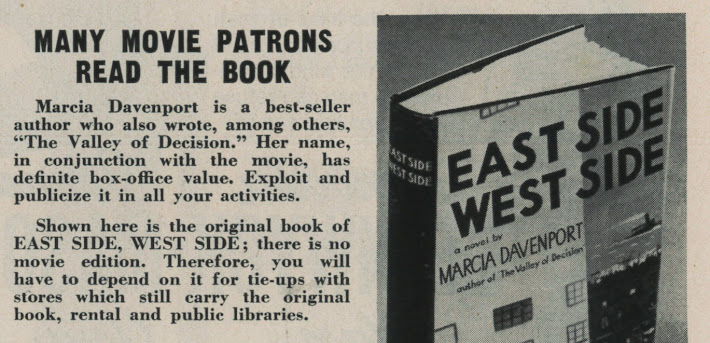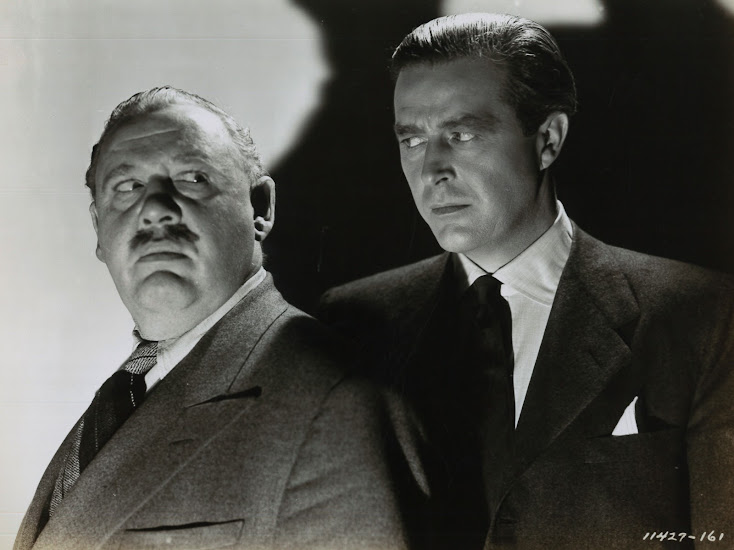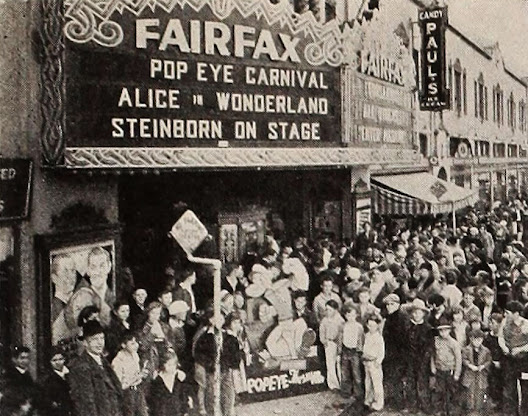Landfills More Crowded Every Day
How Much Stays Good and For How Long?
How soon are best efforts obscured? Success even … great success. There are those who wrote novels that sold into thousands, a million even, whose names we no longer know. Panels on You Tube speak of authors once celebrated whose names mean less than dust, complaint that these are unjustly obscure, fear present that all will join such ranks. It’s relative same with movies and those who made them, celebrated once, barely if ever since. How oft do we meet someone young or unschooled who never even heard of an artist or personality you thought could not be forgot? Happens enough for me to no longer notice. What determines the survival of any book or film, and should it be for one or group of persons to choose what “dates” or not? I lately watched a now obscure feature adapted from an as obscure novel, East Side, West Side, released by MGM in 1949 and starring Barbara Stanwyck, James Mason, Van Heflin, and Ava Gardner. The source scribe was Marcia Davenport, one who “wrote what she knew,” high life among trend-set New Yorkers, doings amidst café society and rot that underlies marriage between perceived class equals. It all was relevant once, spoke not just to a sophisticated audience but a mass one, book-to-film amended to assure that. Published in 1947, East Side, West Side had pedigree for coming behind Davenport’s The Valley of Decision, a considerable hit for MGM in 1945. Having been so would presell whatever oak came of this author’s acorn.
Other literary names past and beyond reclamation, how does Marcia Davenport differ from these? One way at least --- there were the two popular movies made from her books, and so long as TCM or streaming persists, they will be seen and maybe even enjoyed. Movies' rough equivalent, that is its legion of the now-arcane, might include Paul Muni or Greer Garson, seat-fillers then, unknown or debased since, excepting us fans of course. There are others, plentiful others (virtually all of silent players apart from comics), difference being that with films, there is always someone, plenty of someones, who still care. For authors it is often, and only, family members to hold banners aloft. As told previous, Raintree County creator Ross Lockridge left children who did a webpage and defend still his legacy. Movie offspring tender the same by way of familial tribute … Victoria Mature, daughter of we-know-who, developed a cabaret act where she appears on screen with her father, a neat way of reminding us who Victor Mature was and why he matters still. Difference in books and film is commitment, as in we can watch the one in ninety minutes to two hours but reading the other means three-four hundred pages, and that’s a mighty haul for something with less consensus for its relevance or amusement value. My own bites from such apples proved bittersweet: Son of Fury, Whispering Smith, Little Lord Fauntleroy. Just wanting to like or appreciate a thing will not get it done. So why are we made to feel like philistines for often preferring movies over books they were made from?
 |
| Louis Bromfield At Work Among His Severest Critics |
Whatever East Side, West Side aspired to as a novel, accomplished even, could translate to movies only in terms of melodrama, which was what Hollywood was expert at and audiences demanded whatever the text source. Warners did The Fountainhead a year before, even hired Ayn Rand (above left with Vidor and Cooper) to pen the screenplay, but what they, she, and we got was heat supplied by director King Vidor and star Gary Cooper, both having fed a same stove since careers began, all and sundry secure that what we read is one thing, but what we watch is entirely something else. This applied to any book studios purchased, best result had from work most like a movie to begin with, a trick popular authors learned as output through 30-40’s looked to screen sales for payoffs greater than even best sellers might yield. Louis Bromfield was one of these, a critic’s pet and public favorite whose reputation would fold within his lifetime. The New York Times in 1927 called him “the most promising of all the young American authors writing today,” though by his death in 1956, Bromfield was thought by many to be a used-up “hack” occupied more with soil conservation at his Ohio farm than focusing on novels. Critic-at-large Edmund Wilson referred to more than one Bromfield book “stretching out its arms to Hollywood,” sure a curtail for any author as Wilson saw it. If being remembered is sought-most object of artists, was a surer bet for immortality literature or film? Let lists be made of writer names familiar from decades referenced above, then compare with movie careers still recalled. Which has the longer list? And yet estimation of film folk still runs distinct second, writing by far the more honored estate, even if it pays way less, but isn’t that mere further evidence of our skewed priorities?
There is a thing called a “canon” to which books belong or they don’t. If you were once in, then out, chances are you won’t get back in again. Panel people I watch speak of work long since expelled from the club. Names like Joseph Hergesheimer and James Branch Cabell are bandied. They both were big once, lived lush off their writing. Long-gone Richard Blackmore gave us Lorna Doone, which was voted Best Novel Ever Written by Yale students in 1906. We know Lorna from nothing but a punchline in Three Stooge comedies, or cookies on a market shelf. How does output so celebrated go spent, in fact “unreadable,” as one modern scholar referred to the cast-off lot? There is a movie canon too, less and less for things that are old. Who assigns worthies? Film is taught still, but what do instructors teach? Something tells me a lot of my favorites are not and never will be part of any canon. TCM has theirs, based I suspect on popular rather than aesthetic choices. What would be “Best Of” by estimate of modern-day copyright holders? “Classic” is a more fluid term for movies than books. There are those who would call Harry Potter, novels or films based on them, classic. Picking a canon should be personal, for we as individuals are the ones reading and watching … trouble is everyone wants to be “right” in their pick, and if gatekeepers mock me for liking Lorna Doone, which I have not read, there’s comfort at least in the fact Yale students once went for it.
Did you know In This Our Life (1942) was based on a 1941 novel by Ellen Glasgow that won a Pulitzer Prize in 1942? What I recall as overheated Bette Davis v. Olivia De Havilland, barely different from a dozen other such, came of high-regarded literary antecedent that has probably gone unread since before the Korean War, or am I wrong? If people watch In This Our Life, it is likelier for Davis, or maybe the fact John Huston directed. And yet Ellen Glasgow was very important to the film’s prospects when it was new, having written five best-selling novels (d. 1945). Her family home in Richmond is a National Historic Landmark. How do we best know when time comes to stop enjoying a thing? Critic/historian David Thomson in 2008: “Has anybody made a voluntary decision to see Heston’s Ben-Hur in recent years?”, being a question you may answer correctly with Hell No, Are You Kidding? or anything other than Yes. And yet I kind of liked it the last time round, so may not properly know my classics, at least not ones that deserve to be in a canon. There now is fear factored into praise for things cast out, and it doesn’t matter if they once won Academy Awards, as Ben-Hur assuredly did. I recall Gone With The Wind as many people’s notion of the Best Picture Ever Made. Find someone who will say so now. Many are afraid to trust their own judgment for what is good, or at least acceptable. Literature has been the more segregated for over a century, much of old out if not reviled, what’s recent but tentatively in. Geoffrey Tillotson discussed this under heading of “Writers Despise Their Immediate Ancestors,” being attitude he observed from beginnings of the twentieth century, when young writers and thinkers wanted no part of anything generated during the century before.
A scholar lady, Brit-based, says on You Tube that there are two kinds of novels, one called “writerly” that will challenge you, and a “readerly” sort for relaxation, left alone after a single pleasurable pass. Readerly books go on vacation with their buyer but generally do not come back. Seems in long runs we prefer ambiguity, the read that requires work to comprehend, the sort for which we construct our own meaning. The rest is to enjoy and then discard, being too “passive and accessible” to warrant revisit. A classic never finishes saying what it has to say, changing with us as we grow to understand and appreciate what was there but beyond our grasp. There must be truth in all this, for what lighter-than-air book gets twice or more airing? Movies however are a species different. Is there a term called “watcherly”? (spell check just flagged as “not a word,” so never mind). Let’s try “comfort watching.” There are hundreds of those in my kit, many more than of sort I would seek to “challenge” me. Does this mean novels are inherently more intelligent and worthy of focus than film? Are movies so much an art for dumbbells as to not be art at all? Because they appeal so directly to emotion, I say that is why we go back over and again, to see/hear a thing that moved us a first time and more to come. Novels offer much, but we cannot visualize or listen to them outside our imagination. Purists would say that is how it should be, that all films are passive and require nothing of viewership other than to sit and be fed by a spoon that is the screen.
 |
| Dick Powell as Role Model ... I Use His Odd Goodbye Wave From Time to Time |
Movies rank for most by how many jolts of pleasure they supply. Should one have a dozen, we will come back to it and often. Given a hundred such stimuli, there may be yearly, even monthly, ritual of re-watching, mood elevators more effective than what medicos so recklessly prescribe. Citizen Kane, Sunset Blvd., and The Searchers are settled classics, but I go to them less than The Thing, Cry Danger, or The Tall T, those first listed to admire, while the latter three are to truly collaborate with. Jolts are what more modest ones have. They demand less, but somehow offer more. Jolts come of casual and seemingly ad-libbed conversation that takes place in The Thing, how Dick Powell messes with props in Cry Danger, or the eccentric way he waves goodbye to Rhonda Fleming when he drops her off to work. Jolts. Randolph Scott in The Tall T telling Richard Boone about the ranch he plans to have, despite knowing Boone full intends to kill him. These and others will never forfeit welcome for memory and feeling they call up, isolated moments where it seems real life is being lived, and we’re quiet witness to it. Looking at a face and hearing the timbre of a voice, to know what comes, eager always to see it again. I don’t mind so much being challenged by a film, but once only, please … from there it must sustain on repeated joy it offers, for how much do challenging ones give after you pass their test or not? If “difficult” books, say James Joyce or Tolstoy, reward most for being read again (and again), then here might be where literature essentially parts from film, anything to be admired best done so from afar, at least by me.
















































